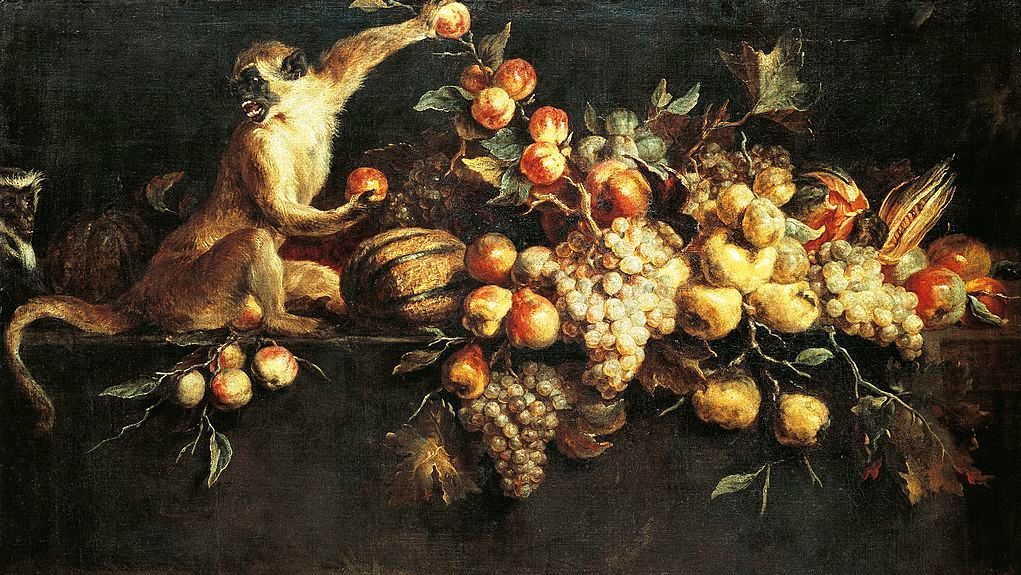What Did Fruits And Vegetables Look Like Hundreds Of Years Ago?
A plant biologist and an art historian walk into a museum. They stand in front of a 17th-century Flemish still-life for a while. The monkey looks pretty accurate, as far as they can tell, but they can't recognize any of the fruits the monkey is stealing. So, they wonder, was the painter just a really bad artist? Or did fruits actually look different back then? They decide to write a scientific paper about it.
Sorry, that wasn't much of a punchline. (Or maybe it is, depending on how you feel about scientific papers.) But it is a true story, and it did result not just in one scientific paper, but an entire series of them, all about the evolution of food throughout history.
The biologist, Ive De Smet, has for several years been studying the historic genetic composition of modern foods using the tools of biologists, specifically examining genes for signs of mutations. This did not, however, give him much of a sense of what the food actually looked like. The eureka moment came for him during a trip to the Hermitage in St. Petersburg, Russia, with his old friend David Vergauwen, the art historian. The painting was "Still life with monkeys" by Frans Snyder. The epiphany was this: how about using old paintings in conjunction with information from the genomes of modern food to find out what historical food really looked like?
"We are mainly interested in the story that, say, the modern orange carrot made from its humble beginnings as a weed, to its current popular form," De Smet told CNN.
Old paintings might yield other information, too, like where certain foods were eaten and what associations they may have had in the popular imagination.
The two researchers are aware that painters are notorious for taking artistic license, which is why they are looking to amass a collection of, say, 17th-century depictions of carrots before rendering any judgments. So far, in addition to carrots, they've studied strawberries, wheat, and watermelon.
Now that COVID-19 has restricted both travel and museum access, the two researchers are soliciting help from the general public to find good historical images. They plan to build an app eventually, but for now, the best way to share your finds with them is through email.
